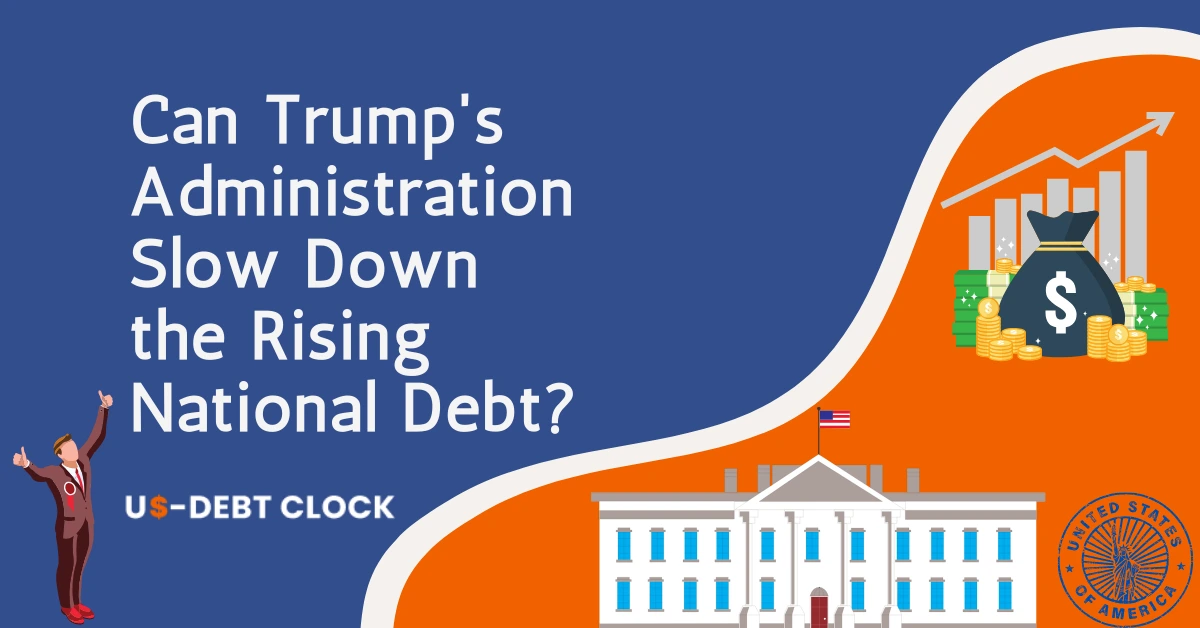As Americans, we often hear about the US national debt in the news. Itâs a complex topic that is too often oversimplified. The US national debt is a complex and often debated topic. Understanding the debt and its consequences is essential for good governance and disclosed decision-making. In this blog post, we will discuss the US national debt to assist you in knowing some shocking truths about US Debt and its consequences on future generations.
Â
Historical Context of US National Debt
Â
History of US National Debt
The Revolutionary War, when the government borrowed money from European countries to fund the war effort, was when the US national debt first began. Since then, there have been cycles of national debt growth and decline, with notable peaks occurring during periods of conflict and economic recession.
Â
Impact of Wars and Economic Downturns on the National Debt
Wars and economic downturns have a significant impact on US national debt. Major clashes like World Wars I and II significantly increased the US National debt as the government took out loans to pay for its military expenditures. The US National Debt increased during economic downturns like the Great Depression and the 2008 recession, so to support the US economy the US government invested capital.
Â
Political Implications of US National Debt
Political parties have varied perspectives on how to deal with the US national debt, which is a hotly debated issue. Spending money on infrastructure and social benefits is believed by some people to be of greater importance than reducing the nation's debt, while other individuals disagree with this statement.
Â
Unprecedented Debt Levels
The current US national debt stands at staggering figures, surpassing historical levels and international debt burdens. Highlighting the shocking growth rate of the national debt will underscore the urgency of finding solutions. The US national debt must be declined to protect the economy of the nation and prevent current and future generations from being burdened with uncontrollable debt. To do this, a variety of measures can be taken, including declining government expenditure and boosting revenue through reforming taxes.
Â
Factors Contributing to the Debt Crisis
Â
Government Spending Habits
Excessive spending on entitlement programs and defense has played a substantial role in driving the national debt higher. Analyzing these spending habits will shed light on the areas that require attention and reform.
Â
Economic Downturns and Stimulus Packages
Economic recessions have further fueled the debt crisis, as governments resort to stimulus packages to jumpstart the economy. Evaluating the significance of such actions in decreasing the debt burden will provide insights into the complicated relationship between economic downturns and debt accumulation.
Â
Political Gridlock and Inaction
Political polarization and gridlock have hindered efforts to address the debt crisis. Discussing the consequences of political inaction will emphasize the urgency of finding common ground and taking decisive actions to tackle the growing debt burden.
Â
Consequences of US National Debt
The US national debt has a major consequence on the economy as it is going to affect the interest rates, inflation, and the value of US currency. Interest rates may climb as the nation's debt grows, making borrowing money from the government more expensive. Expanded inflation can be risky to the economy since it will reduce the value of the US dollar. Before making any changes to policy, it is crucial to thoroughly weigh the possible effects of debt reduction.
Â
Burden on Future Generations
Future generations may be responsible for paying off the US national debt, which is a worry for them. Taxes may increase as a result, and infrastructure and social services may get less funding from the government. Passing on a massive debt burden to future generations raises concerns about intergenerational equity. Exploring the implications of this burden will underscore the importance of addressing the debt crisis for the well-being of future citizens.
Â
Economic Instability and Vulnerability
High debt levels can lead to economic instability, making the country vulnerable to financial shocks. Examining the relationship between debt and economic stability will highlight the demand for sustainable fiscal policies.
Â
Impact on Global Financial Markets
The US debt has far-reaching essences for global financial markets. Analyzing the consequences of the debt crisis on investor sentiment and capital flows will emphasize the interconnectedness of the global economy.
Â
Possible Solutions to US National Debt
Â
Policies and Strategies for Reducing US National Debt
Several programs and tactics may be used to lower the US national debt. This may include increasing revenue through tax reform, reducing government spending, and implementing policies to stimulate economic growth.
Â
Balancing Competing Priorities in a National Debt Management
Managing the US national debt is a balancing act, as policymakers must consider a variety of competing priorities. This involves guaranteeing economic stability, making investments in social and infrastructure projects, and making sure that present and future generations are not overextended in debt.
Â
Balanced Budget and Spending Reforms
A balanced budget is a key objective in reducing the national debt. Discussing the concept and exploring potential spending reforms will offer insights into managing expenditures more effectively.
Â
Revenue Generation and Tax Reforms
Increasing revenue through sustainable means is crucial for debt reduction. Evaluating options for revenue generation, such as tax reforms, will highlight the importance of a fair and sustainable tax system.
Â
Long-Term Planning and Sustainable Debt Reduction Strategies
Long-term planning is essential for sustainable debt reduction. Exploring strategies such as fostering economic growth and implementing entitlement reforms will provide a roadmap for policymakers to tackle the debt crisis effectively.
Â
Future of US National Debt
Â
Predictions for the Future of National Debt
Predictions for the future of the US national debt vary widely. Some analysts predict continued growth, while others see increased investment and debt reduction possibilities.
Â
Impact of Current Events on the National Debt
Current events, such as the COVID-19 pandemic and ongoing trade disputes, can have a significant impact on US national debt levels. It will be necessary to carefully observe and analyze the consequences of these occurrences because they are yet not completely recognized.
Â
Importance of Monitoring National Debt In The Future
Monitoring changes in the debt and their long-term effects is crucial as the US national debt keeps rising. Maintaining financial stability and ensuring debt reduction will require continued attention and engagement.
Â
Conclusion
The shocking truth about the US national debt reveals the urgent need for action. The consequences of this burden on future generations, economic stability, and global financial markets cannot be ignored. Policymakers and citizens must come together to discover feasible solutions, including balanced budgeting, revenue generation, and long-term planning. By addressing the debt crisis responsibly, the US can secure a stable economic future for generations to come. To make wise judgments regarding changing the law, it is critical to raise awareness and comprehension of the problem. We encourage continued learning and engagement with the topic to ensure a stable and prosperous future for all Americans.



